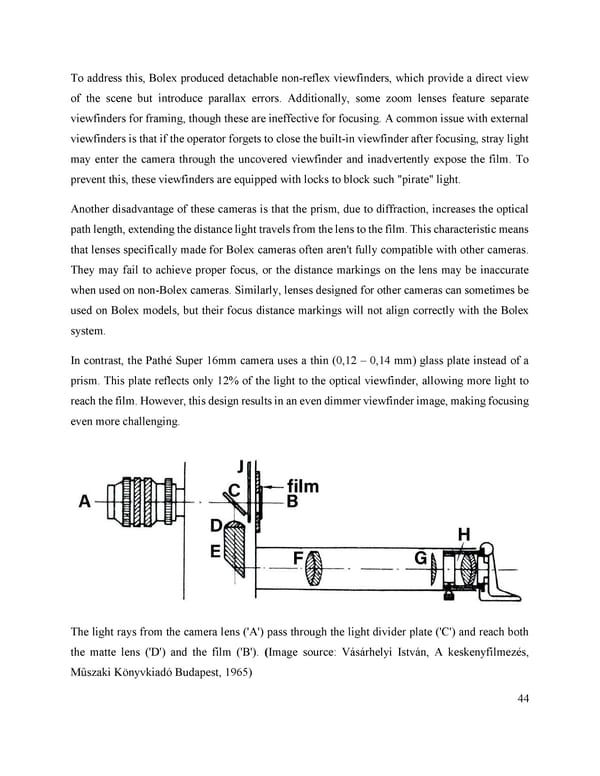To address this, Bolex produced detachable non-reflex viewfinders, which provide a direct view of the scene but introduce parallax errors. Additionally, some zoom lenses feature separate viewfinders for framing, though these are ineffective for focusing. A common issue with external viewfinders is that if the operator forgets to close the built-in viewfinder after focusing, stray light may enter the camera through the uncovered viewfinder and inadvertently expose the film. To prevent this, these viewfinders are equipped with locks to block such "pirate" light. Another disadvantage of these cameras is that the prism, due to diffraction, increases the optical path length, extending the distance light travels from the lens to the film. This characteristic means that lenses specifically made for Bolex cameras often aren't fully compatible with other cameras. They may fail to achieve proper focus, or the distance markings on the lens may be inaccurate when used on non-Bolex cameras. Similarly, lenses designed for other cameras can sometimes be used on Bolex models, but their focus distance markings will not align correctly with the Bolex system. In contrast, the Pathé Super 16mm camera uses a thin (0,12 – 0,14 mm) glass plate instead of a prism. This plate reflects only 12% of the light to the optical viewfinder, allowing more light to reach the film. However, this design results in an even dimmer viewfinder image, making focusing even more challenging. The light rays from the camera lens ('A') pass through the light divider plate ('C') and reach both the matte lens ('D') and the film ('B'). (Image source: Vásárhelyi István, A keskenyfilmezés, Műszaki Könyvkiadó Budapest, 1965) 44
 Lost Analogue: Exploring Film, Music, and Interdisciplinary Methods in Education Page 44 Page 46
Lost Analogue: Exploring Film, Music, and Interdisciplinary Methods in Education Page 44 Page 46